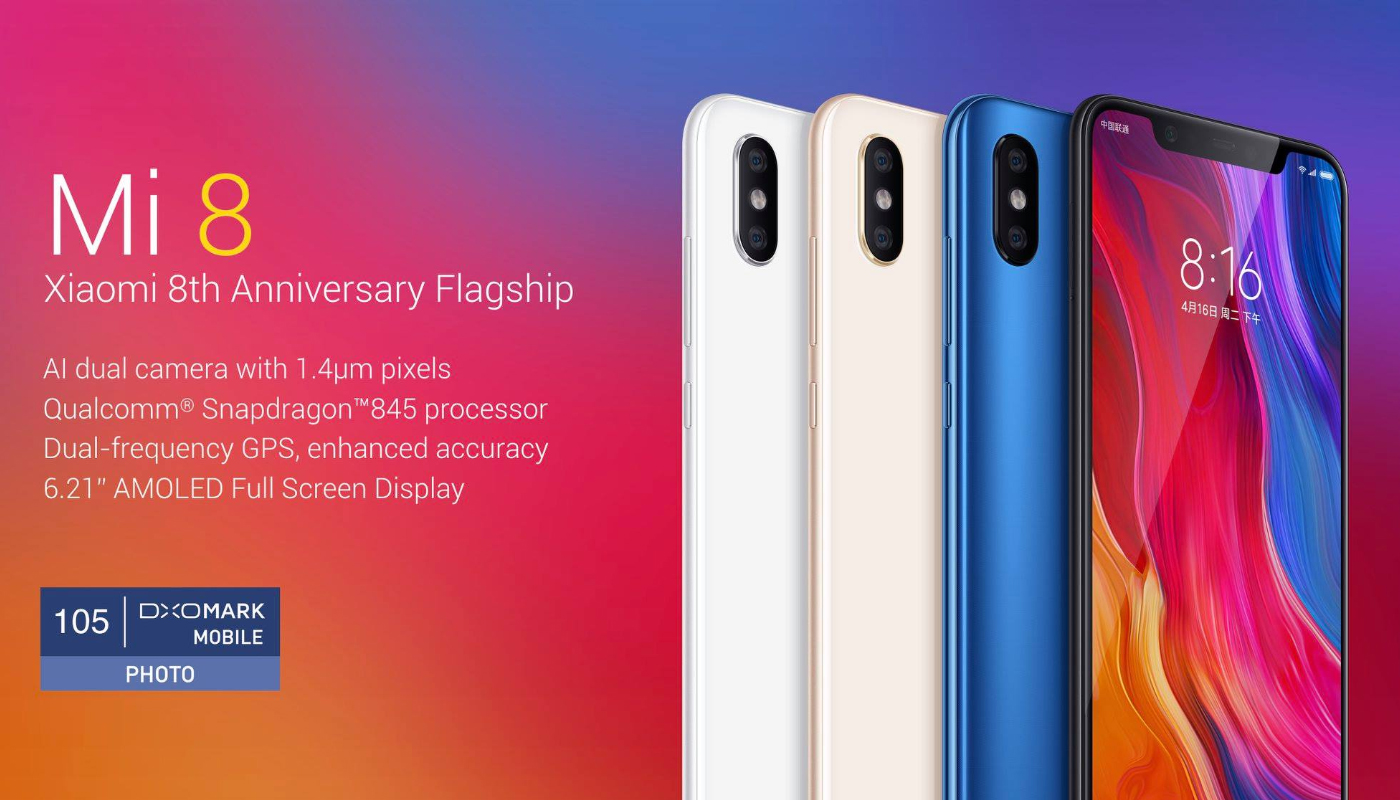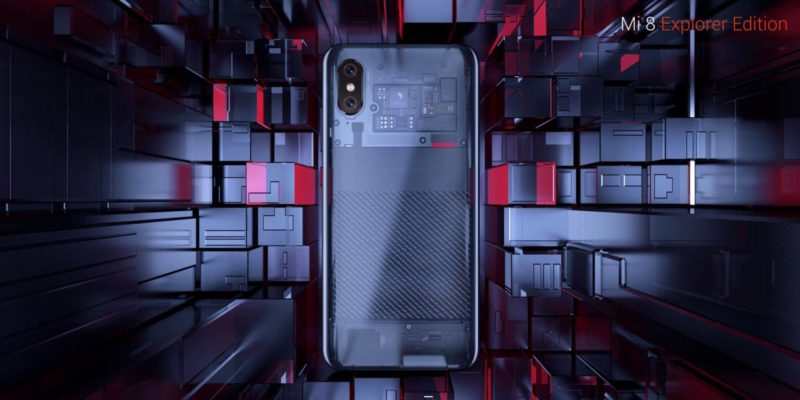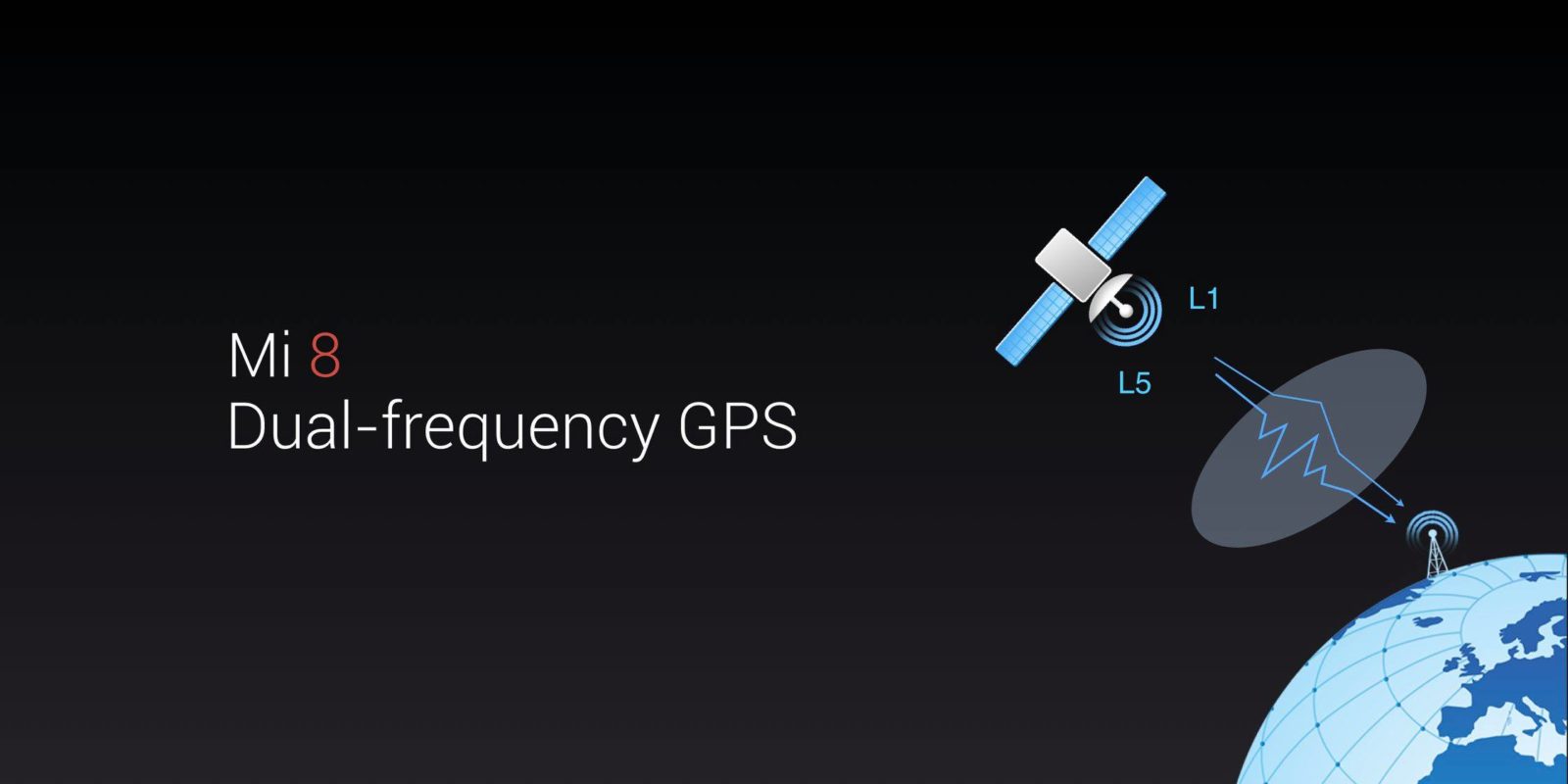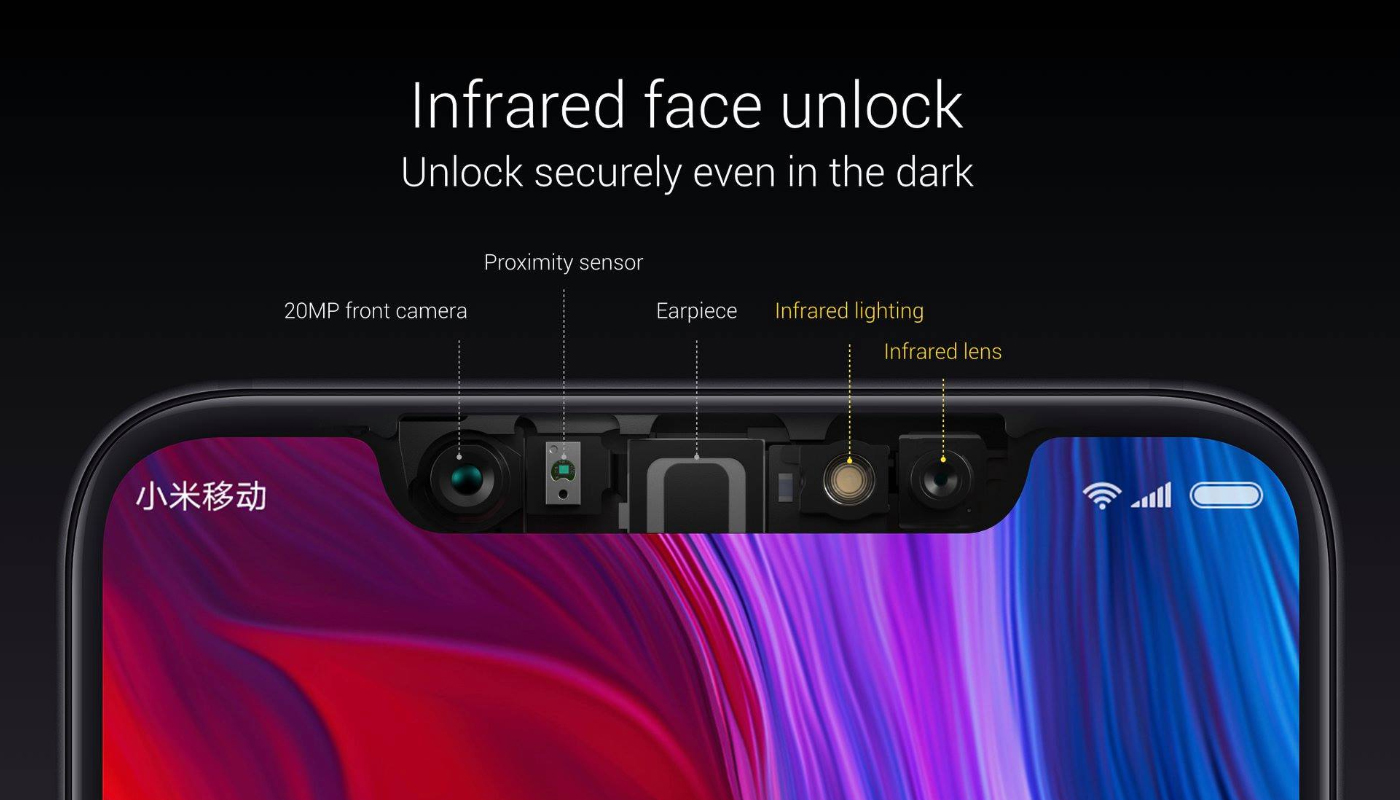
HANDSETS
The Mi 8 is here and it packs quite a punch.
It’s finally here – Xiaomi has taken the wraps off of its latest flagship, Mi 8, at the Shenzen event in China. It has the top-notch hardware, this time along with a notched display, and infrared sensors and 3D facial recognition (explorer edition only) that works even in the dark.
Moreover, it gets this year’s latest AI flavors and will be the first to run the AI-powered MIUI, along with a host of photography features that automatically detect a scene and change the camera settings accordingly. But that’s not even the main highlight, the Mi 8 Explorer Edition has an in-display fingerprint sensor and is among the first few smartphones that come with this feature.
Without further ado, let’s check out the details and see whether Mi 8 has the potential to outshine its rivals.
Design & Display

It’s hard to not notice that Mi 8’s design is heavily inspired from Apple’s recent flagship, you get a similar notch on the front that houses various sensors – including 3D facial recognition, a thin but visible lower bezel, and sharp edges. Just like the iPhone X, it has a glass finish on the rear (albeit with a noticeable curve) and there’s a dark vertical dual camera array on the top left.
However, there’s one thing that sets the Mi 8 apart – the Explorer Edition has an in-display fingerprint sensor in addition to 3D facial recognition. It works like Vivo’s UD range of phones, all you have to do is place your thumb in the middle of the screen and Xiaomi claims its much faster than any other in-screen fingerprint implementation.
It also gets a unique transparent back version like the HTC U12+.

Now on to the display, Xiaomi has packed a Samsung-made AMOLED display in the Mi 8, it is 6.21-inch Full-Screen display with an FHD+ (1080 x 2248) resolution. Screen-to-body ratio is an impressive 88.5%, the display can go up to a whopping 600nit of brightness in direct sunlight and it has an aspect ratio of 18.7:9. Of course, it also has Always-On support.
Hardware & Storage
Inside, you get this year’s Octa-core Snapdragon 845 paired with 6 GB RAM. The octa-core configuration this time is 4×2.8 GHz Kryo 385 Gold & 4×1.8 GHz Kryo 385 Silver and the graphics department is handled by an Adreno 630. The Mi 8 posted an Antutu score of 301,472 – the highest score for all devices equipped with the 845 so far.
Storage options are 64, 128 GB or 256GB, but you should choose wisely because it cannot be expanded. There’s no microSD slot.

Another highlight is the Dual-frequency GPS in the Mi 8, It not only reduces interference from the surrounding buildings, it also increases the accuracy, eliminating delays and other problems.
Camera & Software
Mi 8 has a dual-cam setup, consisting of two 12 MP sensors that are fully AI-powered. The main sensor is a Sony made IMX 363 with 1.4um pixel size while the other one is a Samsung made sensor with 1um pixels.
There’s dual pixel autofocus, 4-axis OIS, AI-scene detection and video editing, and a host of modern features. The front camera is 20 MP, and also has AI support. It aids facial recognition, however, there are various infrared sensors housed on the notch that are used to detect faces.

The software is Android 8.1 Oreo, underneath the company’s latest MIUI 10. The company has brought in major changes alongside their new OS and has fully integrated it with AI that learns user actions and preloads items based on predictions. This improves speed.
MIUI 10 is also a lot more like stock Android than ever before.
Battery, Price, & Availability
Battery size is 3,400 mAh and it gets Qualcomm’s Quick Charge 4+ and is chargeable via Type-C. Color options are Ceramic Black, Black, Blue, and White.
Price is lower as compared to most flagships, it comes starting from ¥2699 for 6+64GB variant, ¥2999 for the 6 GB/128 GB variant and ¥3299 for the 6 GB/256 GB variant.
The Explorer Edition will cost ¥3699 and will only be available in 8 GB/128 GB.
Xiaomi Mi 8 Specifications
- CPU: 4x 2.8 GHz Kryo 385 Gold & 4x 1.8 GHz Kryo 385 Silver
- GPU: Adreno 630
- Chipset: Qualcomm Snapdragon 845
- OS: Android 8.0 Oreo-based MIUI 10
- Supported Networks: 2G, 3G, 4G Dual Sim (supports 43 bands)
- Design:
- In-display Fingerprint scanner (explorer edition only)
- 3D facial recognition using Infrared based facial recognition
- Display: 6.21″ Samsung AMOLED 18.7:9 display with Full HD+ (2248 x 1080) resolution
- Memory:
- RAM: 6/8 GB
- Internal: 64/128 GB/256GB
- Card slot: No
- Camera:
- Primary: 12 MP + 12 MP, dual pixel phase detection autofocus, 4-axis OIS, dual-LED dual-tone flash
- Secondary: 20 MP, facial recognition using infrared
- Connectivity: NFC, Wi-Fi 802.11 b/g/n/ac, Bluetooth 5, GPS
- Battery: 3,400 mAh with Quick Charge 4+ and Qi Wireless charging
- Colors: Ceramic Black, Black, Blue, White
- Price: 6 GB/64 GB¥2699 (Rs. 48, 765), 6 GB/128 GB ¥2999 (Rs. 54,000), 6 GB/256GB ¥3299 (Rs. 59,600), Explorer Edition¥3699 (Rs. 66,780)
Comments
Post a Comment